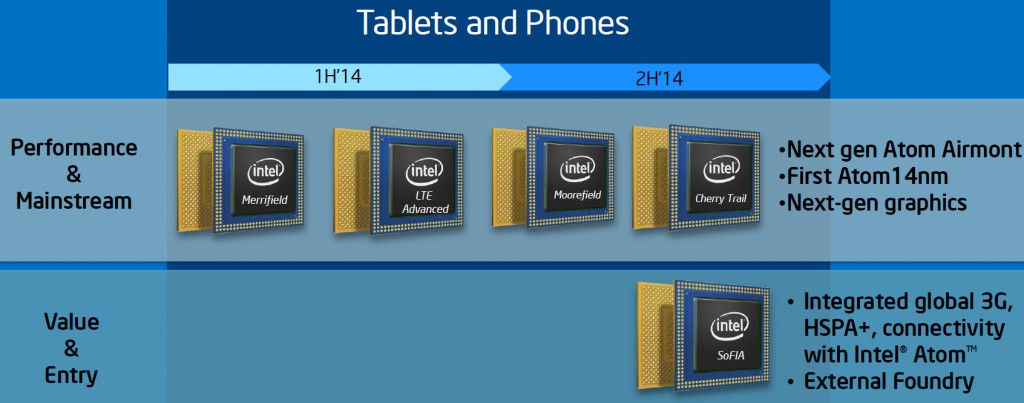Intel Corp. has been offering application processors for smartphones and tablets for several years now, but none of those chips featured integrated baseband capabilities, which is why the company was unable to address the mass market of mobile devices. However, this is going to change in the fourth quarter of this year when the world’s largest chipmaker starts to sell its highly-integrated code-named SoFIA solution.
“[At the MWC 2014] we demonstrated SoFIA, our first integrated application processor [with] baseband, after adding it to the roadmap late last year,” said Brian Krzanich, chief executive officer of Intel, during this week’s conference call with financial analysts and investors. “We ae on track to ship the 3G solution to OEMs in Q4 2014, with the LTE version following in the first half of 2015.”
The code-named SoFIA system-on-chip is designed for the value and entry-level mobile market. It is believed that the chip was originally developed by Infineon (the company whose mobile SoC assets Intel now owns) and featured an ARM core. Intel replaced the ARM core with a pair of its own 64-bit x86 cores based on Silvermont micro-architecture without touching other parts of the SoC. SoFIA features integrated 3G/HSPA connectivity as well as everything else necessary to power an entry-level smartphone. Initially SoFIA will be made at TSMC.
Intel hopes that thanks to additional performance provided by two Silvermont cores (compared to one ARM core) the SoFIA will become a popular solution for low-cost smartphones. The 4G/LTE version of SoFIA is projected to feature up to four cores, further improving general-purpose performance.
“Our dual-core SoFIA already performs quite well against quad-core systems,” said Mr. Krzanich. “As we move into next year, we will bring quad-core SoFIA-based products out as well. We believe that we can stay very cost competitive and have a performance leadership.”
Intel believes that one of the key advantages of the code-named SoFIA as well as other Atom chips is their compatibility with multiple operating systems, including Google Android, Google Chrome OS as well as Microsoft Windows thanks to x86 architecture.
Discuss on our Facebook page, HERE.
KitGuru Says: While it is good to see that Intel can finally offer a true highly-integrated chip for smartphones, it does not look like SoFIA in its initial version will be a breakthrough product. It lacks 4G/LTE and while it can be integrated in some of the existing designs, without new network connectivity it hardly makes a lot of sense for smartphone vendors to simply boost performance of previous-gen handsets. What remains to be seen is how good will the second-generation SoFIA with 4G/LTE be compared to its rivals in the first half of 2015. That chip may actually be a very important one for Intel and the industry.
 KitGuru KitGuru.net – Tech News | Hardware News | Hardware Reviews | IOS | Mobile | Gaming | Graphics Cards
KitGuru KitGuru.net – Tech News | Hardware News | Hardware Reviews | IOS | Mobile | Gaming | Graphics Cards



